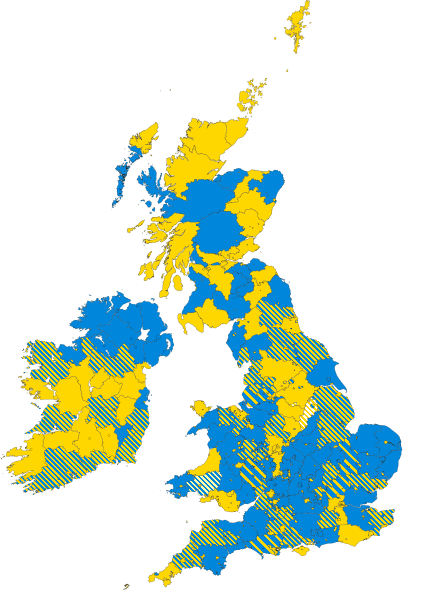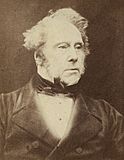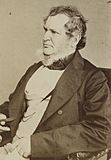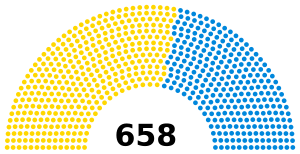1865 United Kingdom general election facts for kids
|
||||||||||||||||||||||||||||||||||
|
|
||||||||||||||||||||||||||||||||||
|
All 658 seats in the House of Commons 330 seats needed for a majority |
||||||||||||||||||||||||||||||||||
|---|---|---|---|---|---|---|---|---|---|---|---|---|---|---|---|---|---|---|---|---|---|---|---|---|---|---|---|---|---|---|---|---|---|---|
|
||||||||||||||||||||||||||||||||||

Colours denote the winning party—as shown in 1865 United Kingdom general election § Notes
|
||||||||||||||||||||||||||||||||||
|
||||||||||||||||||||||||||||||||||
The 1865 United Kingdom general election was a big vote to choose members for the House of Commons. This is the main part of the UK Parliament. In this election, the Liberals, led by Lord Palmerston, won a much larger number of seats. They beat the Conservatives, who were led by the Earl of Derby.
The Liberal Party had actually changed its name from the Whig Party since the last election. Lord Palmerston remained the Prime Minister after this election.
Sadly, Lord Palmerston passed away in October of the same year. Lord John Russell then became the new Prime Minister. Even though the Liberals had many seats, they disagreed on how to change the voting system. Lord Russell resigned in 1866 after losing a vote in Parliament. This led to the Conservatives forming governments, first under Derby and then under Benjamin Disraeli.
This election was special because it was the last time until 2019 that a political party increased its majority after already winning the previous election with fewer seats.
Contents
Fairness in Elections: Stopping Corruption
The 1865 election was not very exciting across the country. However, there were many problems with fairness in some local areas. People at the time said there was more dishonest spending and rule-breaking than ever before.
Because of these problems, 50 official complaints were made about the election results. Out of these, 35 were looked into, and 13 elected members of Parliament (MPs) lost their seats because of unfair practices. In four areas, the problems were so widespread that a special group, called a Royal Commission, had to be set up to investigate.
To fix these issues, when Benjamin Disraeli became Prime Minister in 1867, he introduced a new way to handle election complaints. Before, a group of MPs decided these cases. But with the new Parliamentary Elections Act 1868, special judges would now handle them. This made the process much fairer and more official.
New Voting Areas
For this election, some new voting areas, called constituencies, were created. These included:
- Northern West Riding of Yorkshire
- Southern West Riding of Yorkshire
Election Results: Who Won?
The Liberals won the election with a clear majority. This means they had more than half of all the seats in the House of Commons. Here's a quick look at the main results:
| UK General Election 1865 | |||||||||||||||
|---|---|---|---|---|---|---|---|---|---|---|---|---|---|---|---|
| Party | Candidates | Votes | |||||||||||||
| Stood | Elected | Gained | Unseated | Net | % of total | % | No. | Net % | |||||||
| Liberal | 516 | 369 | +13 | 56.08 | 59.52 | 508,821 | −6.2 | ||||||||
| Conservative | 406 | 289 | −9 | 43.92 | 40.48 | 346,035 | +6.2 | ||||||||
| Total | 658 | +4 | 100 | 100 | 854,856 | ||||||||||
See also
- List of MPs elected in the 1865 United Kingdom general election
- 1865 United Kingdom general election in Ireland




